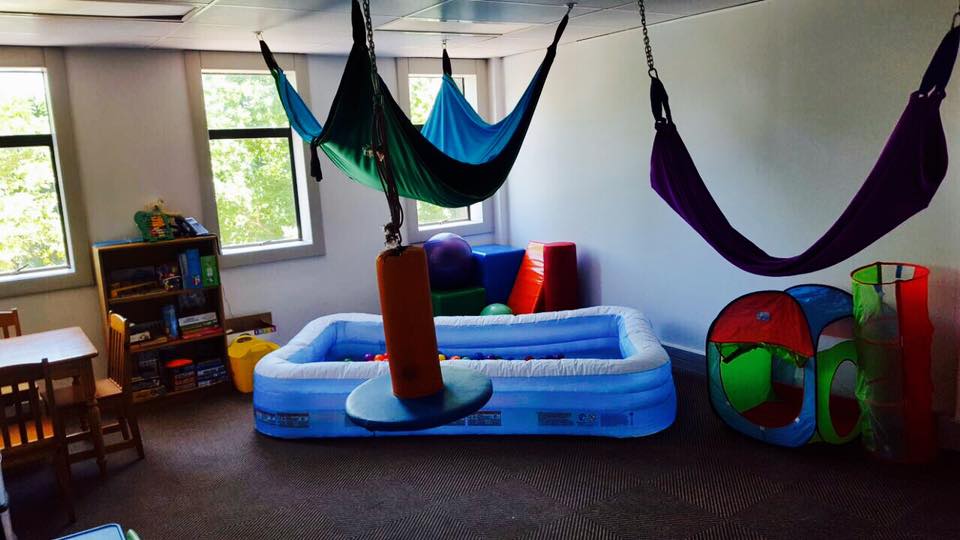We often get asked if a child’s speech or auditory processing will improve with OT… The short answer is yes, but let’s take a look at why.
Vestibular Modulation and Integration: Impact on Speech Development and Auditory Processing
The vestibular system, often overlooked, plays a crucial role in our sensory experiences and overall development. It is responsible for balance, spatial orientation, and coordination. Recent research has highlighted its significant impact on speech development and auditory processing. This article explores how vestibular modulation and integration influence these critical areas.
Understanding the Vestibular System
The vestibular system is located in the inner ear and consists of the semicircular canals and otolith organs (saccule and utricle). These structures detect head movements and gravitational forces, providing essential information to the brain about body position and movement. Proper functioning of this system is vital for maintaining balance and coordinating movements.
Vestibular Integration and Auditory Processing
Auditory processing refers to how the brain interprets and makes sense of sounds. The vestibular system is closely linked to the auditory system, as both are located in the inner ear. Vestibular integration, or the ability to process and respond to vestibular input, can impact auditory processing.
Information from the vestibular system travels through the same nerve (the vestibulocochlear nerve) to the brain as the information from the auditory system. This nerve transmits signals to the brainstem and the cerebellum, which are key areas for processing balance and coordination. From there, the information is further relayed to the cerebral cortex, particularly the parietal and temporal lobes, where higher-level processing occurs. These brain regions are involved in integrating sensory information, including auditory signals, which is essential for tasks like distinguishing between similar-sounding words or understanding spoken language in noisy environments. When we thus strengthen the nerve through vestibular work, the pathways are stronger to also relay auditory input more accurately.
Children with vestibular integration issues may struggle with auditory processing tasks, leading to difficulties in learning and communication, affecting academic performance and social interactions.
Vestibular Modulation and Speech Development
Speech development is a complex process that involves multiple sensory systems working together. The vestibular system contributes to this process by helping children develop a sense of body awareness and spatial orientation. When the vestibular system is functioning well, children are better able to control their movements and maintain posture, which is essential for clear and fluent speech. And as explained in the previous paragraph, it also improves auditory processing which is very important for the development of speech and language.
Children with vestibular modulation difficulties may exhibit challenges in speech development. These difficulties can manifest as poor muscle tone, delayed motor skills, and difficulties with balance and coordination. Such issues can hinder a child's ability to produce speech sounds accurately and fluently.
Vestibular Therapy and Its Benefits
Vestibular therapy, a form of physical therapy, focuses on improving vestibular function through specific exercises and activities. It has been shown to have a positive impact on both speech development and auditory processing. By engaging in activities that stimulate the vestibular system, such as balance exercises, spinning, and swinging, children can enhance their vestibular modulation and integration.
The benefits of vestibular therapy extend to improved speech development. Children who undergo vestibular therapy often show better control over their movements and posture, leading to clearer and more fluent speech. Additionally, the improved vestibular function helps in the coordination of the muscles involved in speech production.
Vestibular therapy also supports auditory processing by enhancing the brain's ability to integrate sensory information. As the vestibular system becomes more efficient, children may find it easier to process auditory signals, distinguish between sounds, and understand spoken language in various environments. This improvement can lead to better academic performance and more effective communication.
Supporting Vestibular Function
Early intervention is key to addressing vestibular modulation and integration issues. Occupational therapists and speech-language pathologists can work with children to develop activities that stimulate the vestibular system and improve sensory processing. These activities may include swinging, spinning, and balance exercises, which help children develop better body awareness and coordination.
Incorporating vestibular activities into daily routines can also support speech development and auditory processing. For example, playing on a swing or engaging in gymnastics can help children improve their balance and coordination, which in turn can enhance their ability to produce clear speech and process auditory information effectively.
Conclusion
The vestibular system plays a vital role in speech development and auditory processing. By understanding and supporting vestibular modulation and integration, we can help children overcome sensory challenges and achieve their full potential in communication and learning. Vestibular therapy offers promising benefits, improving both speech development and auditory processing. Early intervention and targeted activities can make a significant difference in a child's development, leading to improved speech and auditory processing skills. This in turn provides a child the opportunity to reach their speech and language goals faster. Working in conjunction with a Speech therapist will result in the best outcome.
Happy parenting!

